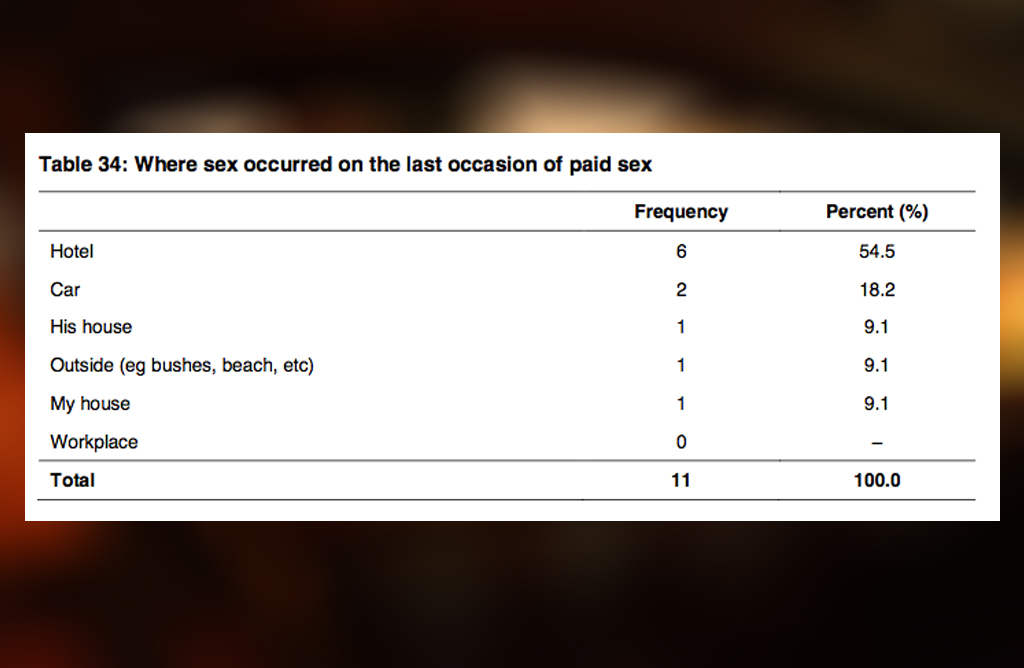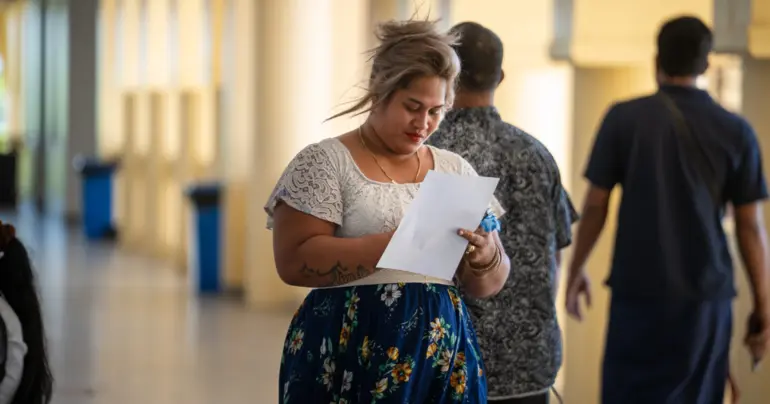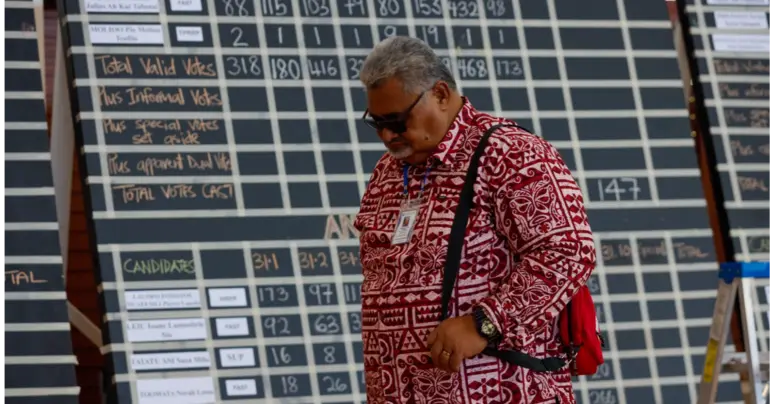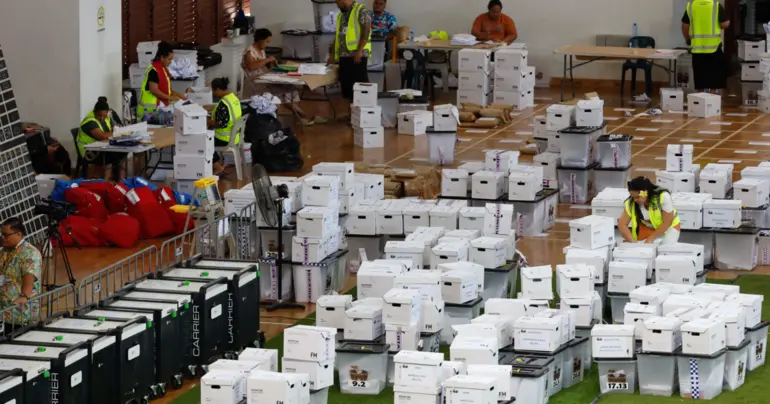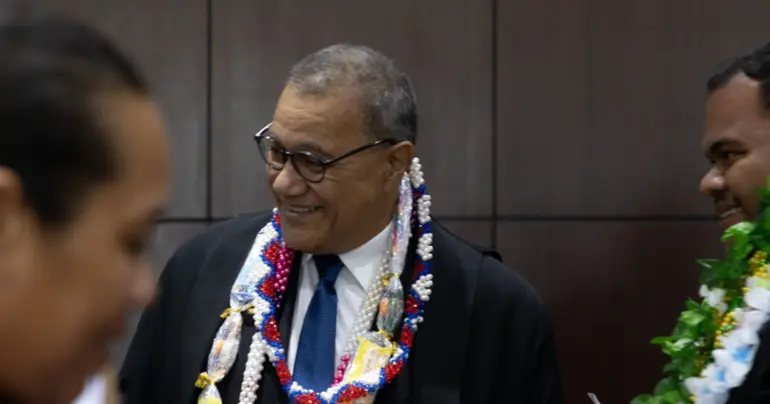Sex Workers; on society's margins
Sex work is illegal in Samoa and takes place at the margins of society, therefore, sex workers in Samoa are widely invisible and, up to the time of this report, there was no credible information related to them.
This is according to the Pacific Mapping and Behavioural Study: HIV and STI Risk Vulnerability among Key Populations in Samoa that was conducted in 2016.
Obtained by the Samoa Observer, the report examines the behaviour risk factors and social and structural determinants of risk that drive the epidemic among vulnerable groups, such as men who have sex with men, transgender people, sex workers and seafarers.
The study was part of a larger research effort that covered nine Pacific countries including Samoa.
“This study was undertaken by the United Nations Development Programme (UNDP), the United Nations Children’s Fund (UNICEF) and the University of New South Wales (UNSW) with the support of numerous local research assistants from the communities.”
The 74 page report was supported by several organisations and individuals, including the Ministry of Health, particularly the Health Research Committee employees, Ms Aaone Tanumafili and Ms Robert Carney (Robina), also Samoa Fa’afafine Association (SFA), and President Tootooali’i Roger Stanley, and Vice President Vaialia Iosua.
The report says that seafarers have reported that sex workers are easily available in Samoa (McMillan 2013), and anecdotal evidence suggests that there are hidden populations on the rise.
“It is understood that sex in exchange for cash or goods has existed for a while, and often takes place in situations and places where alcohol is involved.” (Samoa Ministry of Health 2013).
“The 2013 Global Aids Progress Report indicates that sex work is prominent among unemployed young people, which may be a way to supplement their incomes when other work is not available.
“Of persons who are tested for HIV or STIs, there are currently no records kept on occupations (Samoa Ministry of Health 2013).
“There is therefore no current way of drawing an understanding of the sexual health of sex workers and their testing habits by looking at existing data.”
The report indicates that three female sex workers were interviewed in depth.
“The situations of the women varied, and they each illustrate the differing contexts and experiences of sex work in Samoa.”
The first interviewee is 20 years old who lives with her parents and recently started having sex with foreign men for large sums of money (100–300 tala). “Her husband recently left her and she started hanging around with her friend who hangs out in the area where sex workers are based at night in Apia.
“She buys clothes and things with the money she earns for herself and does not seem to do it out of economic necessity.”
According to the first interviewee there are more than 20 that work from where she works.
“I know there are other girls and locations, around the hospital.
“One time we had a kind of disagreement (among the girls working there) so some went and set up near the hospital.
“For some of the girls that do the same work, on Friday and Saturday nights are busy and some women only come out then, it is good working nights, but for us we come out every day.”
The 20 year old spoke about the first time she went with a client.
“I was just relaxing and then I came the next night and the taxi driver picked me up and took me to a hotel, where he [client] stays, he is Indonesian, the taxi driver come and pick me up to meet this man. I spent the whole night and he gave me 200 tala.
The second interviewee is 24-years-old and lives in the village with her family.
This one started working for sex while living in American Samoa.
“She started casually receiving goods and money from men and, in return, had sex with them.
“Her involvement in sex work/sexual exchange seemed more opportunistic and casual.”
The report further says that she started having sex for money when she was in American Samoa.
“I was getting things from these guys so in return then I would have sex with them.”
She said it first started while she was attending high school in American Samoa.
Later , when she returned to Apia, she got involved in sex work.
She said, “When I was 18, I met the group, I didn’t know who they were at the time. Then I started to get to know them and heard them talking about sex work and the way they look and the clothes they wear ... I started to observe how they dress up, how they call out to the guys on the road, both locals and foreigners, that is how it started.
“Sometimes my family members passed by and they were calling my name to come back home. But I just realized from there, the girls are getting money out of it, and I see and I wanted to join. If I go home I don’t know what to do. So I drank with them and that is how it all started with party life...”
The third interviewee is 29-years-old and sometimes lives in the area where sex workers are based and sometimes stays with her aunty.
“She describes having an unsupportive family situation. “She only goes with locals and her rate is 50 tala or less. “She says she is tired of doing it. “The workers had this to say about other women engaged in sex work:
“I see many girls just come and get a taxi and then go, taxi go, taxi go and they just get 10 tala. They go with local Samoans, they go to the seawall or the mountain.”
ECONOMICS/ROLE OF SEX WORK
For two of the women that were interviewed, sex work provides them with money: “For this money it is only to support me. I don’t want to use this money for my family because I know that it is dirty money and I don’t want to feed my family with the food that I buy with this money ... “I am about to quit, I am tired of this life and I see there is no ending and I am bit tired and getting old.
“So I started to feel it is about time to quit doing this kind of work, but the only reason is to earn income. “With this money I can use to buy my clothes, for food, it’s really for food and for smokes.”
CLIENTS
The women interviewed had a wide range of clients and one young woman met her clients through taxi drivers. “I only go with [men from] overseas ... China, American, Solomon, Indonesian, not locals.” One woman said she works with the locals. “I don’t want to go with the palangi (caucasian) ones cause I am not comfortable with my English. “I am more comfortable with the local ones ... I go with them to the budget hotels around town, but they also take me to the bush spots and in the car as well.
PAYMENT
The report says that “as well as a range of clients, there was a range of payment for their services. “A young woman who was casually having sex for money while she was in American Samoa away from her family in the village said ‘it’s really up to them, how much they want to give.”
Another woman who had only recently started doing sex work charged considerable amounts for sex: “Oh, I don’t know about other girl but with me they pay 150 or 200 [tala] ... 300 [tala] ... Someone asked me to go f*** for the 50 tala, but I don’t like it. “I tell him give me first the big money and then let me show you, but only 50 tala I don’t like it, go talk to the other girl.” Another interviewee who had been involved in sex work for a number of years and only had local clients, said:
“I have a rate of 50 tala minimum, then goes up. “But some of my clients do negotiate the price, but it is also a negotiation for me and I always ask for the price before we have sex. “So it is my call to do it or not do it. Some of my clients negotiate 20 or 30, if it is the only clients available then I will have to take it cause it’s better than nothing.” More on the report in later editions.




